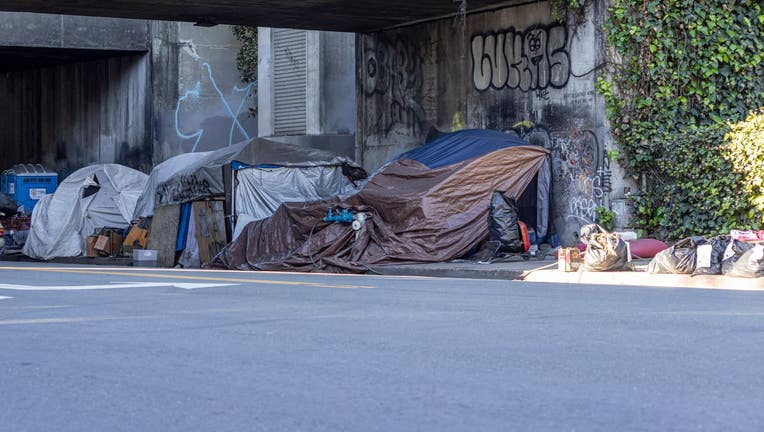Homeless population in Alameda County approaching 10,000 people

OAKLAND, Calif. - Alameda County's homeless population grew 22 percent over the past three years and is approaching 10,000 people, according to the release Wednesday of official point-in-time numbers.
The count completed in February was the first since 2019 and was delayed a year because of the COVID-19 pandemic. Counts are typically taken every two years.
Populations of both sheltered and unsheltered people were up since 2019. Seventy-five percent of the population has been on the streets for a year or more. Black people make up 43 percent of the homeless population, more than any other racial group.
"There's a lot of economic factors that are driving our homelessness," said Katie Haverly, acting executive director for EveryOne Home, a community-based organization which released the official Point-in-Time count numbers.
A resident must earn $44 per hour to afford a two-bedroom apartment in Alameda County, Haverly said. That's nearly three times the minimum wage, she said.
Haverly said a surprising result was the increase in the number of people living in vehicles. That number rose from 1,431 to 2,319, a 62 percent increase.
Sixteen percent of the county's homeless people lost their homes because of COVID-19, according to the report. Sixty-eight percent had received a COVID-19 vaccine.
More than half of the county's homeless population resides in Oakland. More than 3,300 were unsheltered in the city while about 1,700 were sheltered.
Oakland Mayor Libby Schaaf said at her State of the City address Tuesday before the Oakland City Council that the city has made progress providing temporary shelter to its unhoused neighbors.
The number of sheltered homeless people roughly doubled in the last three years, which may have been due to the funding provided by the state and federal government.
But like the county, the number of homeless people in Oakland rose significantly. The number was up 24 percent to more than 5,000.
"The results of this Point In Time Count underscore even more the need to accelerate the goals, investments, and racial equity strategies outlined in the Home Together Plan to secure the affordable housing, prevention, and supportive service interventions needed for our community," the report says.
SEE ALSO: Homeless residents along Wood Street may get access to other land
The Home Together Plan was published in 2020 and provides the next steps and investments needed to address homelessness in Alameda County.
Pandemic-related funding to address homelessness is going away, Haverly said. But more money is coming available. The county is applying for funding of up to $15 million from the U.S. Department of Housing and Urban Development.
The application for that funding is due Oct. 20.
Haverly said the county's homeless population has increased steadily over the past six to eight years, and this year's count was not as bad as expected.
"I think we were expecting a more significant increase," she said.
The official 2022 Point-in-Time count can be found at: https://everyonehome.org/

